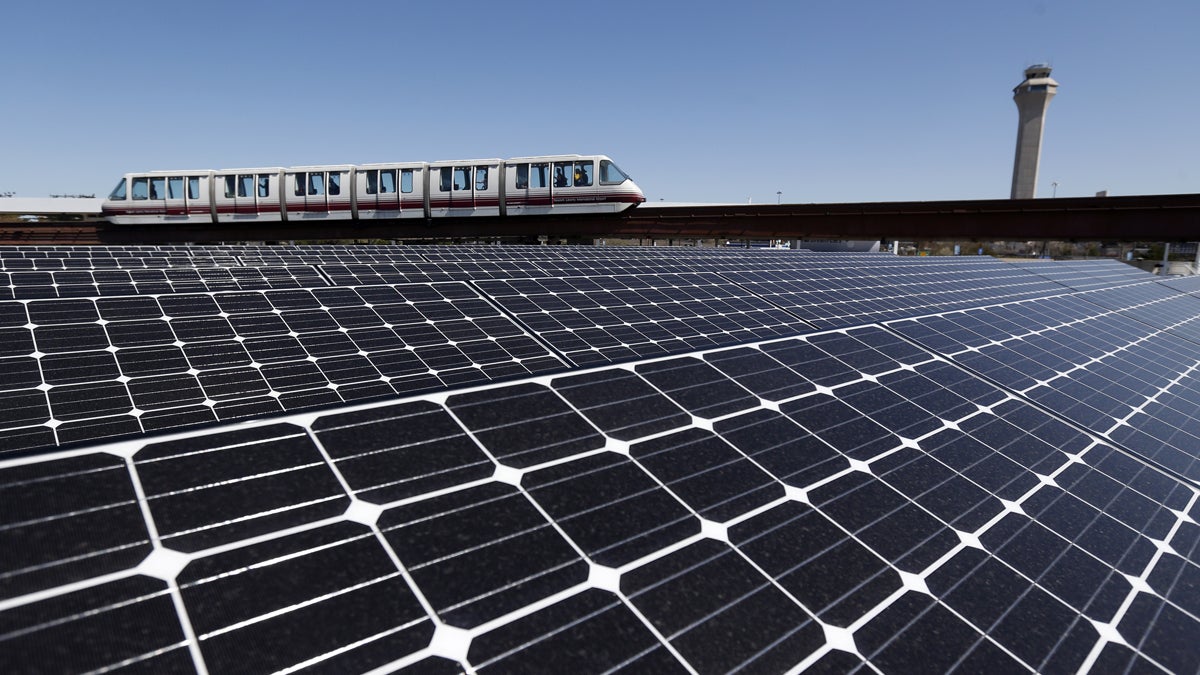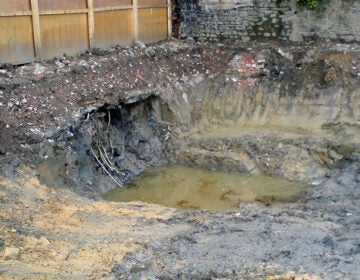Will its own success sabotage the garden state’s solar sector?
Add up solar installations — deployed and in the pipeline — and New Jersey has reached the point which current subsidies expire — before a new program has been put in place.

Solar panels on the roof of the building supplying energy to the AirTrain at Newark Liberty International Airport soak up the rays. A New Jersey lawmaker wants the state to aim for 80 percent renewable energy use by 2050. (AP file photo)
Is New Jersey’s solar sector once again about to be a victim of its own success?
Eight months ago, a sweeping new clean-energy law was enacted that mandated shutting down the current system for financing solar, which many viewed as too costly to ratepayers. This despite the fact that the scheme had vaulted New Jersey into fifth place among states according to the number of solar installations.
At the time, it was believed there was enough time to get a new program in place, but events — a rapid buildout of solar installations — seem to have outpaced projections. By some estimates, the state already has achieved the cutoff designated by the law when the existing program should end.
Reaching the solar trigger
That trigger occurs when 5.1 percent of the state’s electricity comes from solar systems. According to the latest information from the Clean Energy Program, the state crossed that threshold when the number of installed solar systems (104,708) is combined with the number of systems in the pipeline as of December 31, 2018.
That has important ramifications for solar projects now in the pipeline but not yet built. It also raises the question of whether solar developers will continue to invest in future projects given the uncertainty of what kind of financial incentives they may receive.
“There is a substantial number of projects at risk of being canceled,’’ said Tony Orr, a senior vice president of Legal Dynamics Energy Solutions, adding “only projects with too many sunken costs can proceed under these circumstances.’’
Anxious for decision on subsidies
Solar developers are pressing state officials to quickly make decisions on what subsidies will be available under a transition program and what projects will continue to obtain the more substantial incentives under the existing program.
“In the absence of clear direction in these areas, project financing will come to a grinding halt across all market segments,’’ predicted Fred DeSanti, executive director of the New Jersey Solar Energy Coalition.
Without knowing what kind of revenue they will receive for installing solar systems, developers are unlikely to obtain financing to build new arrays, a prospect that could lead to layoffs in an industry that employs more than 7,000 people, according to solar advocates.
“It’s important to end the uncertainty,’’ agreed Scott Weiner, an attorney representing NextEra Energy Resources, a clean-energy company.
In a hearing on the solar transition program in New Brunswick, the usually fractured sector provided a somewhat united front on what they are seeking.
What solar developers want
Essentially, they want all new solar projects approved by the New Jersey Board of Public Utilities to be enrolled in a transition program that provides them with incentives roughly equal to 80 percent of the value of what owners of solar systems now receive, approximately $175 per megawatt-hour for electricity produced by the system.
“The switch to a transition program that is less expensive needs to happen immediately,’’ said Lyle Rawlings, founder and president of Advanced Solar Products in Flemington.
In addition, developers want all previously state-approved projects in the pipeline, but not yet built, to be grandfathered into the existing program, which gives owners credits (dubbed solar renewable energy certificates).
Others worry the state will fall short of the new law’s goal of reining in the cost of solar to utility customers, who end up subsidizing the program.
“The big overriding issue is the budget,’’ said Sara Steindel, an assistant deputy in the Division of Rate Counsel. “We need to achieve the goals within the state cap.’’
That cap requires the state to achieve 50 percent renewable energy by 2030 while not increasing energy costs to consumers by more than 7 percent initially and eventually by 9 percent.
WHYY is your source for fact-based, in-depth journalism and information. As a nonprofit organization, we rely on financial support from readers like you. Please give today.



